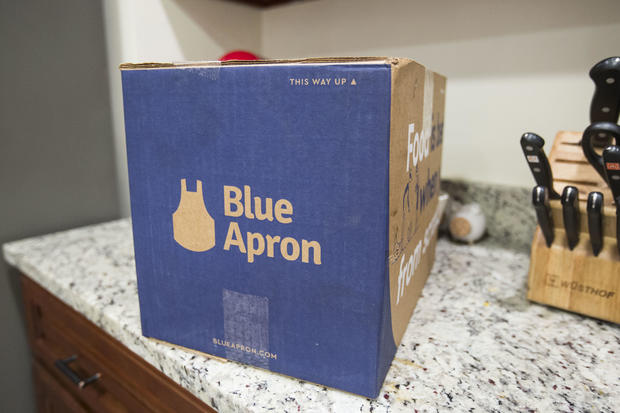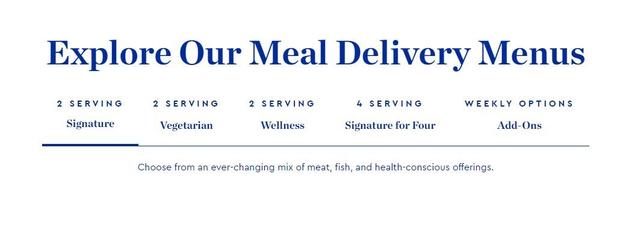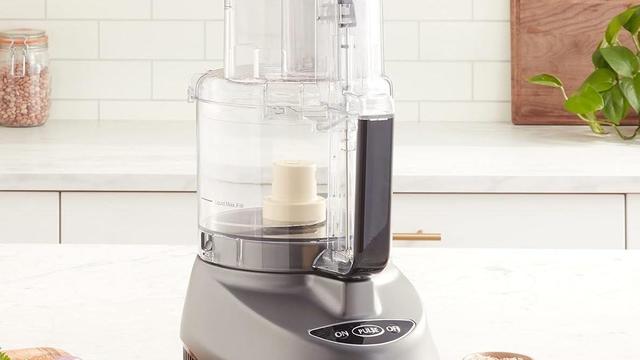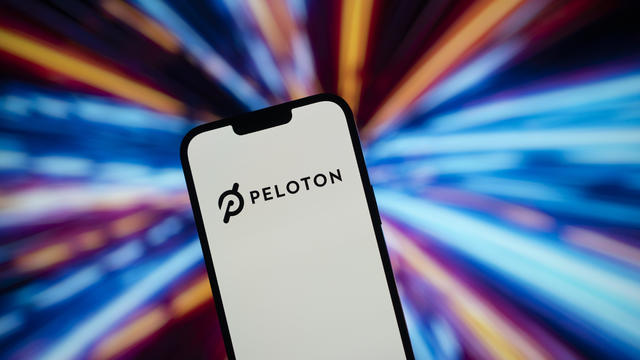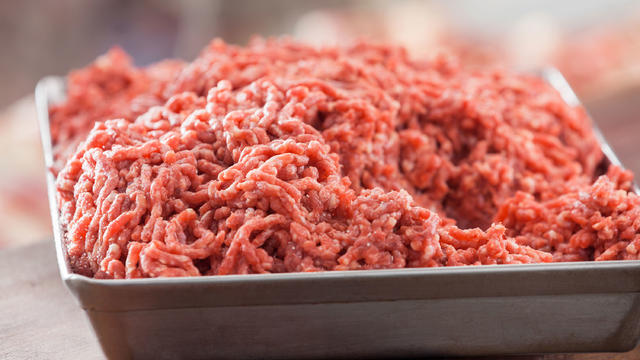Our Blue Apron meal kit review puts the popular blue box to the test
If you want to make life easier in the kitchen, but can't afford a personal chef (or takeout seven nights a week), welcome to the meal kit club. Meal kit services are a great way to enjoy a home-cooked dinner without some of the less glamorous parts of the process like grocery shopping or lengthy prep work.
After a four-week trial run with one of the most popular meal kits around, I can say that Blue Apron is a great choice for anyone looking to switch things up come dinnertime. I signed up for a sample run to get a firsthand look at the meal delivery service in action: How appealing and varied are the weekly recipes? Are the packaging materials recyclable? Is it all really worth the price of admission?
I get into it all below with my in-depth review on the iconic meal delivery service below. Read through my experience to see what I appreciated about Blue Apron, what I didn't, and how I think it compares to other heavy hitters in the meal kit game -- such as HelloFresh, another meal kit I tried out and reviewed. Is Blue Apron worth your time and money? Let's get into it.
In this review
- Blue Apron: How does it work?
- Is Blue Apron expensive?
- What about healthy meal options?
- Is Blue Apron good for people with dietary limitations?
- What do Blue Apron reviews look like?
- Biggest pros and cons
- Final verdict: Is Blue Apron worth it?
- More content from CBS Essentials
During my test run, I browsed Blue Apron's impressive menus, crunched the subscription numbers, and took a magnifying glass to every ingredient delivered to my doorstep. OK, maybe I didn't cross-examine every grape tomato and uncooked ravioli, but I did take enough notes to answer your biggest questions.
Blue Apron: How does it work?
Pick any meal kit service and the core experience is largely the same: You pick your preferences, mull over how many meals you want delivered each week, and pony up the price of your first order. Then you go about your life until that first box shows up at your door, full of everything you need to cook a few tasty meals: pre-portioned ingredients and easy-to-follow recipes.
Signing up for Blue Apron is easy enough. You can check off one or more of five categories listed to personalize your meal plan, including:
- Chef favorites
- Wellness
- Family friendly
- Fast and easy
- Veggies
These are pretty self-explanatory options. Recipes under the wellness category offer nutritionist-approved meals that can be great if you need to count calories or carbs, for example, while fast and easy is exactly what you think: meals that can be ready in no time at all.
I found the preferences to be a bit vague. There was no shortage of appealing meals to choose from each week when I sampled Blue Apron, but the meal kit company doesn't have a whole lot to offer when it comes to restricted diets or preferences.
Your next task is a math problem. If the price per serving goes down the more meals you pick, but you can select anywhere from two to five meals (with two or four servings apiece) to be delivered each week, how do you build your plan? For context, I signed up for four two-serving meals a pop, which cost me $10 per serving -- but the same plan with twice as many servings per meal would have cost $9 per serving.
All of those choices lead you to one of four meal plans: signature, vegetarian, wellness, or signature for four. This is where the magic happens: picking which recipes you want to try out each week. In addition to a decent selection in each category (I counted more than a dozen each), there is also a selection of weekly add-ons to choose from including desserts, "heat and eat" meals that require nothing more than a microwave and five minutes of your time, and a la carte proteins.
During my test run, I tried to balance out the familiar with something new each week. The Blueberry-Thyme Chicken and Creamy Mashed Potatoes were a personal favorite: the blueberry bourbon spread took an otherwise ordinary dish and made it nice and flavorful. Some runner ups were the Vietnamese-Style Turkey Meatballs with mayo and rice and the Crispy Skin Salmon: both were good meals with solid sides.
Is Blue Apron expensive?
If you're looking for a budget-friendly meal kit, Blue Apron is a solid middle-of-the-road choice with prices starting at $11 per serving. You can find a few cheaper meal delivery services out there like EveryPlate and Dinnerly, which have plans that clock in at below $6 per serving. But Blue Apron makes up for this with higher quality ingredients (in my opinion) and fun, unique recipes that will keep you engaged week after week. It's also worth noting that HelloFresh and Home Chef, two other popular meal kit services, also start at around $11 per serving.
As with most of these meal companies, Blue Apron has a few caveats hidden up its sleeve when it comes to costs. You already know that prices go down the more servings you opt in for and vice-versa, which means that ordering just two two-serving meals per week would bump up your price to $12 per serving. You also don't want to forget about shipping: It's $10 per order, which is par for the course (HelloFresh is no different), but you can usually count on free shipping with your first order.
Then there are the "premium" meals. Certain recipes come with more expensive protein or ingredients, which could double your costs per serving if your palate is on the more extravagant side. I avoided premium recipes myself (they're clearly labeled as "premium"), since premium pricing is anywhere from $15 to $20 per serving depending on your plan. Indulge in the gourmet Duck Frites with Mushroom Pan Sauce and Arugula Salad, for example.
Blue Apron won't save you a ton of money, especially when compared to similar meal kits. If you're trying to justify the switch from cooking your own meals, I found Blue Apron to break even with what I would spend on my own ingredients -- for more, read my detailed report on meal kits vs. grocery shopping.
At the end of the day, Blue Apron is worth it if the recipes alone appeal to you and you're ordering more than two meals per week. There's plenty to choose from in the weekly recipe menus. Plus, if you didn't flinch at the mention of added costs for things like premium recipes, Blue Apron might be the perfect choice for you.
What about healthy meal options?
Blue Apron has a decent variety of healthy recipes to pick from. Each week, you can find a number of low-calorie recipes (500 or less). There are also low-carb and diabetes-friendly recipes to look out for; the latter of which is the result of a recent collaboration between Blue Apron and the American Diabetes Association (ADA) to address growing interest in healthy lifestyles.
Some other noteworthy recipes include those labeled for the heart-healthy Mediterranean diet and WW-approved dishes that are all about veggies and lean proteins. Just look for the WW (formerly Weight Watchers) tag on certain meals.
The wellness plan is full of appealing recipes that stand out, especially if you're used to meal kit menus that lose their allure after a week or two. For instance, the carb-conscious Seared Chicken and Kale Salad is a delicious pick, thanks to a savory sesame-Dijon dressing. If hearty whole grain pasta is more your style, I can't recommend enough the Summer Vegetable Whole Grain Pasta with lemon-pesto sauce. The kicker? It's vegetarian to boot.
All this is to say there's plenty to choose from when it comes to healthy meal options. Although Blue Apron can seem limited for those with restricted diets, if you're looking for low-carb or low-calorie dishes, Blue Apron has you covered. Now, speaking of dietary limitations...
Is Blue Apron good for people with dietary limitations?
One of the biggest drawbacks for Blue Apron might be its limited offerings for special diets. You won't find specific plans that cater to gluten-free, vegan, or keto diets. There are typically half a dozen or so vegetarian dishes to check out each week, but beyond that you would have to rely on substitutions and replacements to satisfy your dietary needs.
As a whole, Blue Apron seems to fit the "quality over quantity" mold. Based on what stood out to me, I would judge individual recipes as a cut above other meal kit services in terms of quality ingredients.
But as soon as you narrow your focus down to certain diets or plans, your choices start to dwindle: even vegetarian meals, which get their own category here, may come down to just four or five recipes per week.
If you follow a restricted diet, Blue Apron may not be worth a subscription. Depending on your preferences, other meal kit services like the plant-based Purple Carrot or wholly organic Daily Harvest might be a better fit.
What do Blue Apron reviews look like?
Reviews for Blue Apron seem generally positive, with most first-hand ratings falling between three and four stars (out of five). Satisfied reviewers tend to praise the meal kit company for interesting recipes, easy and engaging recipe cards (that are worth saving, to be honest), and consistently fresh ingredients week after week.
Some people took points off for things already covered, such as limited weekly offerings for certain diets or prices that could be a tad cheaper. Another complaint revolves around the packaging materials. While Blue Apron touts its bags and boxes as being over 85% recyclable by weight, there are simply a lot of bags to contend with.
I personally didn't have an issue recycling the plastic bags that held individual ingredients, but would have appreciated deliveries that didn't use that much plastic. It's a small gripe, but worth mentioning nonetheless.
Biggest pros and cons
Pros | Cons |
|
|
|
|
|
Ok! Chef hats off, that's it for my review on Blue Apron. While there are plenty of other meal kits to choose from for the lowest prices or the biggest variety of diet-specific recipes, Blue Apron still shines as a solid choice for anyone interested in meal delivery.
Beginners and advanced cooks alike can find plenty of memorable dishes with Blue Apron's weekly selections. Blue Apron has a lot to offer -- even if the only thing you care about is skipping a few trips to the grocery store each week.
Don't believe me? Want to see for yourself if these meals are truly worth it? Then consider signing up for Blue Apron and taking advantage of the free shipping and other discounts that come with your very first order.
Prices typically start at $11 per serving, but new subscribers can save $110 across their first 5 boxes, plus free shipping the first order. That translates to prices as low as $3.74 per serving!
Final verdict: Is Blue Apron worth it?
If you fall into one of the following categories, I think this meal delivery service would be a great fit for you:
- You're looking to upgrade from another meal kit service
- You're more interested in trying new recipes without the hassle of a grocery run -- and less interested in finding significant savings
- You don't have any serious dietary restrictions or limitations beyond, say, a preference for low-carb or plant-based recipes
- You're cooking for a busy family and want to add a bit of flair to the dinner table
